
History of the Office
Texas A&M is a university known for its rich history and traditions. As the state’s first public institution for higher education, Texas A&M’s past successes and future visions reflect the leadership of its presidents. Past presidents of Texas A&M range from former governors and legislators to professors and researchers. Some have guided the university through the nation’s darkest hours; some have helped further Texas A&M as a national and international leader in teaching and research. A list of those who have served is provided below with brief information regarding their presidencies.
Past Presidents
M. Katherine Banks, Ph.D., P.E.
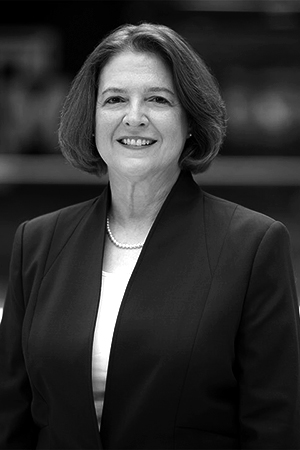
- June 1, 2021 - July 20, 2023
M. Katherine Banks was appointed the 26th president of Texas A&M University in June 2021. She also served as Vice Chancellor of National Laboratories and National Security Strategic Initiatives for The Texas A&M University System through her involvement with Los Alamos National Laboratory and the George H.W. Bush Combat Development Complex at the RELLIS campus. Previously, she served for nine years as vice chancellor and dean of engineering where she led the engineering, academic and research programs in the Texas A&M College of Engineering and three state agencies.
John L. Junkins, Ph.D.
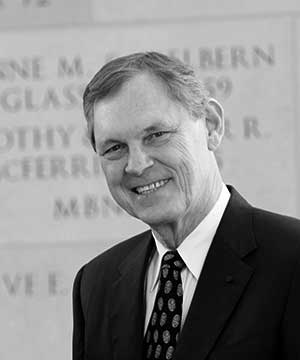
- Interim President, January 1, 2021 - May 31, 2021
Texas A&M Distinguished Professor of Aerospace Engineering John L. Junkins — a nationally renowned educator, researcher and inventor — has taught for 35 years at the university, earning a reputation for being a collaborator and consensus-builder who works with a wide array of constituents, ranging from faculty and staff to students and former students.
Junkins, who is the holder of the Royce E. Wisenbaker Chair in Innovation, is the founding director of the Hagler Institute for Advanced Study, an innovative interdisciplinary effort that brings some of the world’s most prominent scholars to collaborate with Texas A&M students and faculty.
He joined A&M faculty as the first endowed chair holder in the College of Engineering, previously holding academic appointments at the University of Virginia and Virginia Polytechnic Institute. Junkins wrote more than 400 papers and eight widely-used technical books.
Michael K. Young

- President, May 1, 2015 – December 31, 2020
Mark A. Hussey, Ph.D.
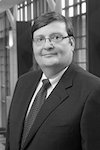
- Interim President, January 14, 2014 – April 30, 2015
Prior to serving as interim president, Mark A. Hussey was named vice chancellor for The Texas A&M University System and dean of the College of Agriculture and Life Sciences in 2008. Hussey also oversees the System’s four agricultural agencies.
R. Bowen Loftin, Ph.D.

- President, February 12, 2010 – January 13, 2014
- Interim President, June 15, 2009 – February 11, 2010
Before his appointment as interim president, R. Bowen Loftin was vice president and chief executive officer of Texas A&M University’s branch campus in Galveston. He has also been a professor of electrical and computer engineering and computer science at Old Dominion University in Norfolk, Virginia, and executive director of the Virginia Modeling, Analysis and Simulation Center. Loftin was one of only five Aggies to serve as president.
Elsa A. Murano, Ph.D.
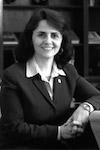
- President, January 3, 2008 – June 15, 2009
Elsa Murano became the first woman and first Hispanic-American president of Texas A&M on January 3, 2008. Previously, Murano served as vice chancellor for The Texas A&M University System and dean of the College of Agriculture and Life Sciences. Murano resigned on June 15, 2009 to return to teaching and research as a professor in the Department of Nutrition and Food Science.
Eddie J. Davis, Ph.D.
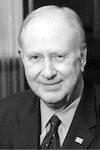
- Interim President, December 17, 2006 – January 2, 2008
Eddie J. Davis, president of the Texas A&M Foundation since 1993, took leave from this position to serve as interim president after the departure of Dr. Robert Gates until the appointment of Dr. Elsa Murano.
Robert M. Gates, Ph.D.
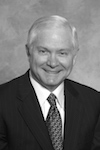
- President, August 1, 2002 – December 16, 2006
Robert Gates became president in 2002, after serving as interim dean of the George Bush School of Government and Public Service at Texas A&M from 1999-2001 and as director of the Central Intelligence Agency (CIA) from November 6, 1991 until January 20, 1993. On December 16, 2006, Gates officially resigned the presidency to assume the role of secretary of defense of the United States after his nomination by President George W. Bush. On February 2, 2007, Gates was conferred the title of president emeritus by unanimous vote of the Texas A&M University System Board of Regents. After the 2008 presidential election, Gates became the first Secretary of Defense in history to serve under two presidents of different parties.
Ray M. Bowen, Ph.D.
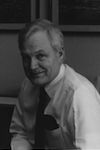
- President, June 1, 1994 – July 31, 2002
Prior to becoming president, Ray Bowen was the interim president of Oklahoma State University. Bowen’s tenure featured the launching of “Vision 2020″ – Texas A&M’s roadmap of the institutional evolution required to achieve its mission as a land, sea and space grant institution of global preeminence by the year 2020. Bowen led the university during one of its worst on-campus tragedies – the collapse of the 1999 Bonfire. Bowen was the fourth Aggie to serve as president.
E. Dean Gage, DVM
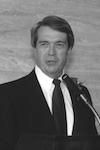
- Acting President, September 1, 1993 – June 1, 1994
E. Dean Gage was serving as a provost and academic vice-president at Texas A&M when he was appointed acting President on September 1, 1993. After withdrawing his name as a candidate from the presidential search he left office on June 1, 1994.
William H. Mobley, Ph.D.
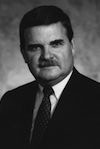
- President, September 1, 1988 – August 31, 1993
- Chancellor, The Texas A&M University System, September 1, 1993 – June 12, 1994
William Mobley assumed the presidency of Texas A&M University on September 1, 1988. He served as president until his promotion to chancellor of The A&M System on September 1, 1993. On June 12, 1994, Mobley resigned the chancellor’s position to return to teaching.
Frank E. Vandiver, Ph.D.
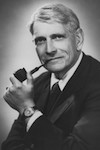
- President, September 1, 1981 - August 31, 1988
Formerly the president of North Texas State University, Frank Vandiver was elected president of Texas A&M on September 1, 1981 and served for seven years. On September 1, 1988, Vandiver resigned to head the Mosher Defense Institute at Texas A&M University.
Charles H. Samson, Jr., Ph.D.
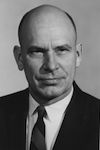
- Acting President, July 10, 1980 - August 31, 1981
Head of the Department of Civil Engineering since 1964, Charles Samson was appointed the university’s acting president on July 10, 1980. He served until September 1, 1981, when Frank E. Vandiver assumed the presidency, and Samson was subsequently appointed the vice president for planning.
Jarvis E. Miller, Ph.D.
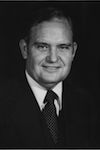
- President, August 1, 1977 - July 10, 1980
Director of the Texas Agricultural Experiment Station, Jarvis Miller was named president of Texas A&M University on August 1, 1977 and reassigned by the Board of Regents as a special assistant to the chancellor on July 10, 1980. He was the third Aggie to serve as president.
W. Clyde Freeman, Jr.
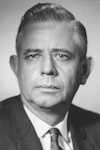
- Acting CEO of Texas A&M University, 1976 and 1977
W. Clyde Freeman, Jr., took leave from his role as executive vice president for administration to serve as acting CEO while President Jack Williams recuperated from two heart attacks.
Jack Kenny Williams, Ph.D.
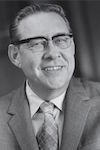
- President, November 1, 1970 - July 31, 1977
- President, The Texas A&M University System, November 1, 1970 - July 31, 1977
- Chancellor, The Texas A&M University System, August 1, 1977 - January 24, 1979
Jack Williams was the vice-president for academic affairs for the University of Tennessee System when he was elected to be the president of Texas A&M University and president of the Texas A&M University System. His tenure for both roles began on November 1, 1970 and he was elevated to chancellor of the System on May 24, 1977. Williams resigned as chancellor on January 24, 1979 in order to return to teaching.
Alvin Roubal Luedecke, LL.D.
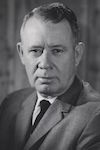
- Acting President, March 30, 1970 - November 1, 1970
Alvin Luedecke was the associate dean of the College of Engineering when he was appointed to be the acting president. Luedecke served from March 30, 1970 until November 1, 1970.
Major General James Earl Rudder
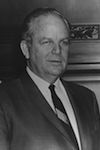
- President, July 1, 1959 - March 23, 1970
- President, The Texas A&M University System, September 1, 1965 - March 23, 1970
James Earl Rudder, hero of D-Day as commander of the U.S. Army’s 2nd Ranger Battalion known for storming the beach at Pointe du Hoc, became vice president of Texas A&M in 1958, and president on June 27, 1959. In 1963, the Agricultural & Mechanical College of Texas became Texas A&M University, and Rudder helped transform the small land-grant college into a respected university. Participation in the Corps of Cadets was made optional, enrollment doubled, the campus slowly became integrated and women were formally admitted. In addition, the research program was greatly expanded and academic and faculty standards were improved. On September 1, 1965, Rudder took over the System presidency as well, holding both positions until his death on March 23, 1970. Rudder, a 1932 graduate of Texas A&M, was the second Aggie to serve as president.
